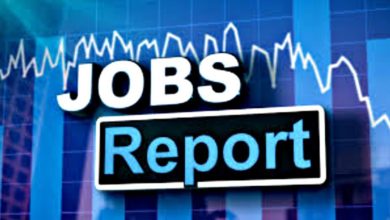Job Data Raises Chances of Aggressive Rate Cuts: What Investors Should Know

The fresh job market data released Thursday suggests that the labor market might be cooling faster than expected, which is causing speculation that the Federal Reserve could consider deeper rate cuts. ADP’s National Employment Report for August revealed private payroll growth of just 99,000 jobs, which was significantly below economists' forecasts of 145,000 and the lowest monthly increase since January 2021.
This softer-than-expected report adds to a series of weakening job growth figures, marking the fifth consecutive month of slower hiring. However, while job creation slowed, jobless claims were slightly below estimates at 227,000 for the week, suggesting a still-resilient labor market.
To Cut or Not to Cut?
With the Federal Reserve's upcoming policy meeting less than two weeks away, the jobs data complicates its decision-making. The main question now is whether a weakening labor market justifies more aggressive rate cuts. While markets had previously priced in a 25 basis point rate cut, the recent ADP report has shifted sentiment toward the possibility of a 50 basis point cut.
Fed Chair Jerome Powell hinted in a recent speech that the Fed has room to act if labor market conditions worsen. However, he also emphasized the importance of looking at a broader range of data, not just one report, before making any definitive moves.
Key Indicators to Watch: Friday's Non-Farm Payroll Data
Friday's non-farm payroll report will provide insights into whether the broader job market is indeed cooling. Economists are forecasting an increase of 165,000 jobs for August, up from the 114,000 added in July. If this report also falls short of expectations, it could be the catalyst for a more significant rate cut in September.
A weaker-than-expected jobs report would confirm the trend of slowing hiring and likely heighten recession fears. On the other hand, a stronger number might lead the Fed to opt for a more cautious 25 basis point cut, as initially anticipated.
Inflation vs. Employment
The Federal Reserve has been walking a tightrope in recent months, balancing its mandates of controlling inflation while maintaining maximum employment. Inflation has moderated, giving the Fed some flexibility to shift focus toward the weakening labor market. Recent remarks from several Fed officials suggest a growing concern over the potential for rising unemployment and reduced hiring.
Raphael Bostic, president of the Atlanta Fed, pointed out that while the job market is weakening, it’s not collapsing. “We’re not seeing mass layoffs, but companies are definitely becoming more selective in their hiring,” Bostic said.
Implications for Investors
The prospect of larger rate cuts could significantly impact various asset classes. A 50 basis point cut would likely provide a short-term boost to equities, especially in rate-sensitive sectors like technology and real estate. Lower interest rates tend to increase the appeal of stocks over bonds, as they reduce borrowing costs for companies and make fixed-income investments less attractive.
However, investors should also be cautious. A rate cut of this magnitude would signal that the Fed is increasingly worried about economic growth, which could raise concerns about a possible recession.




